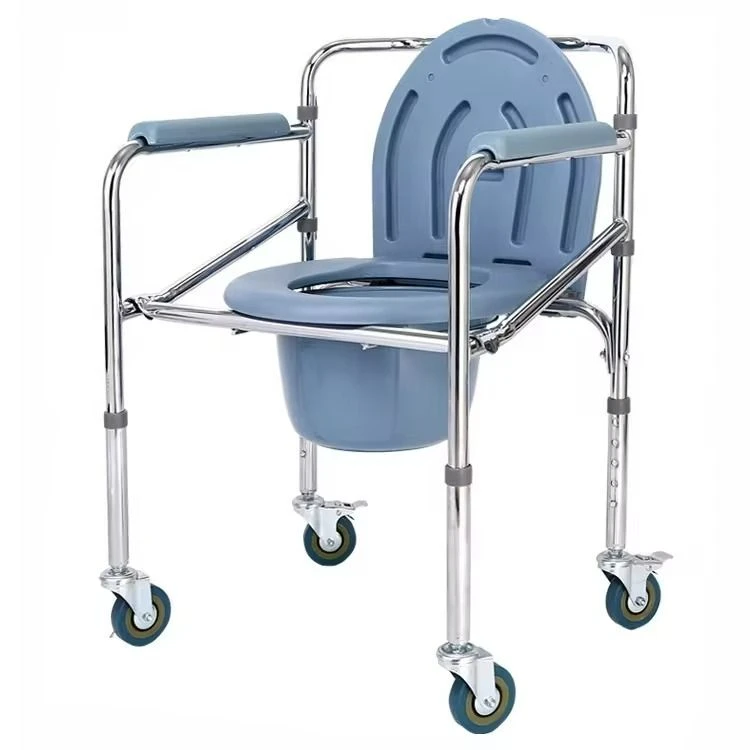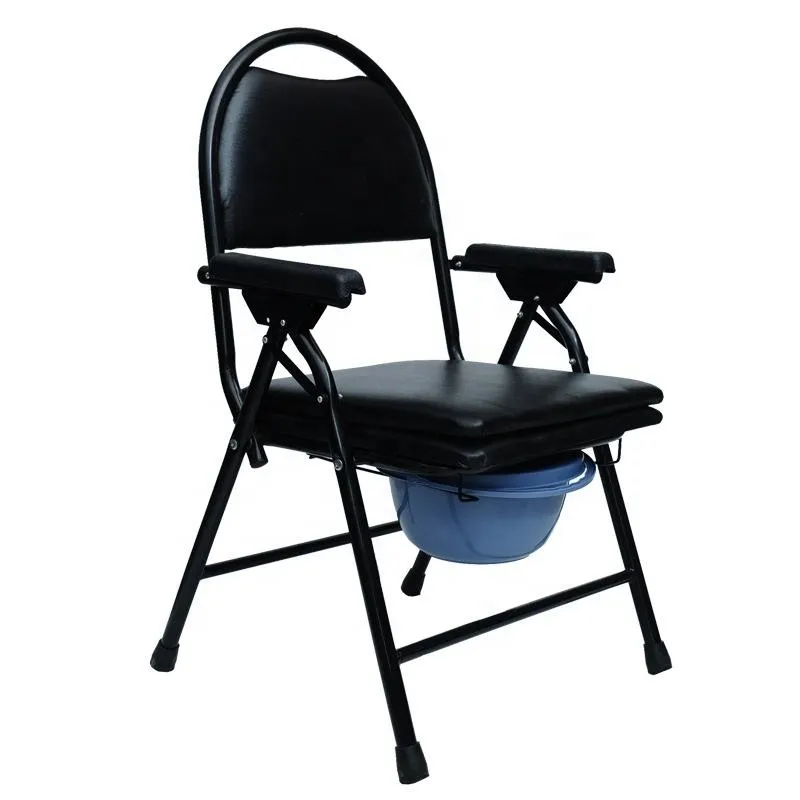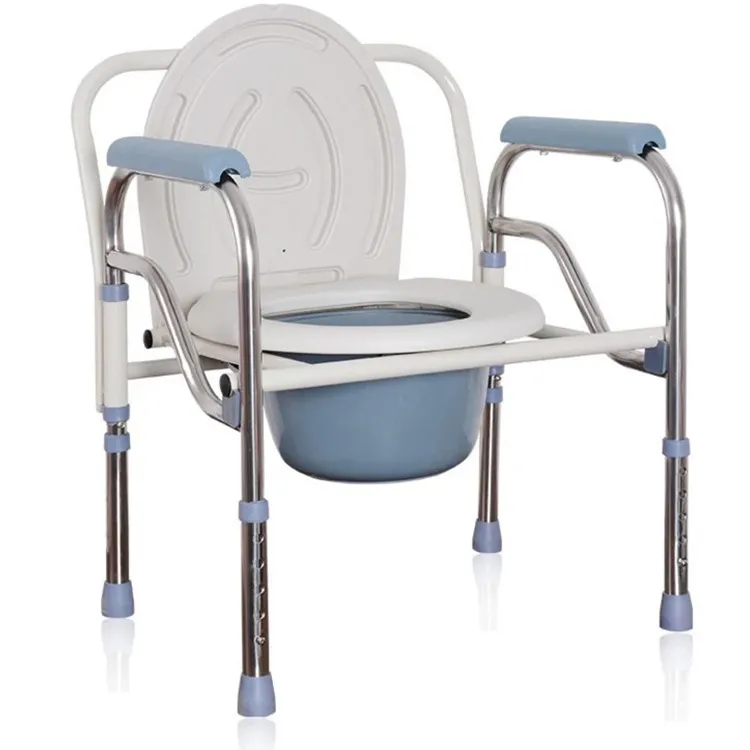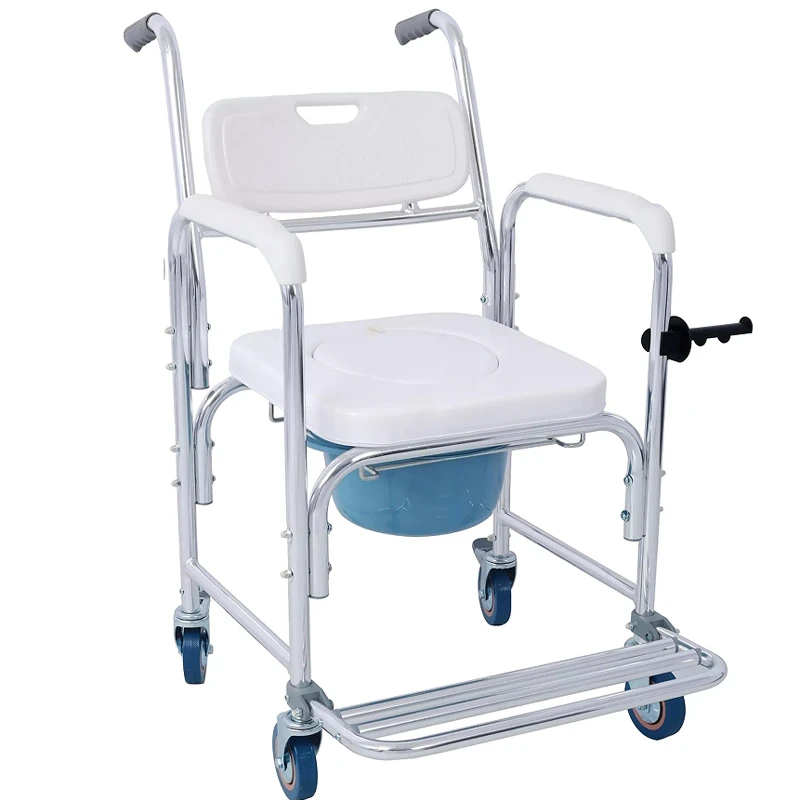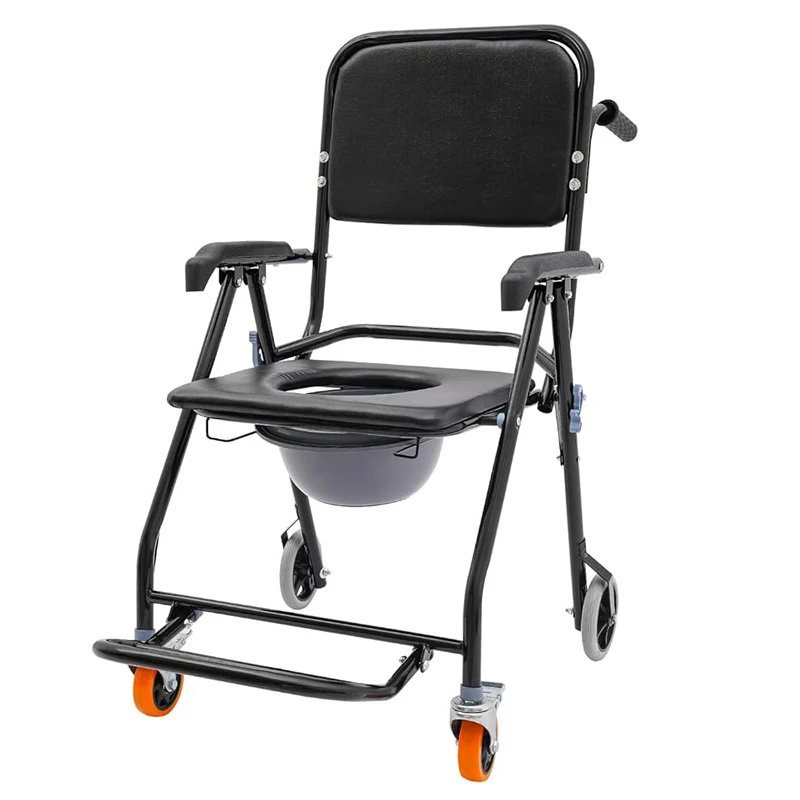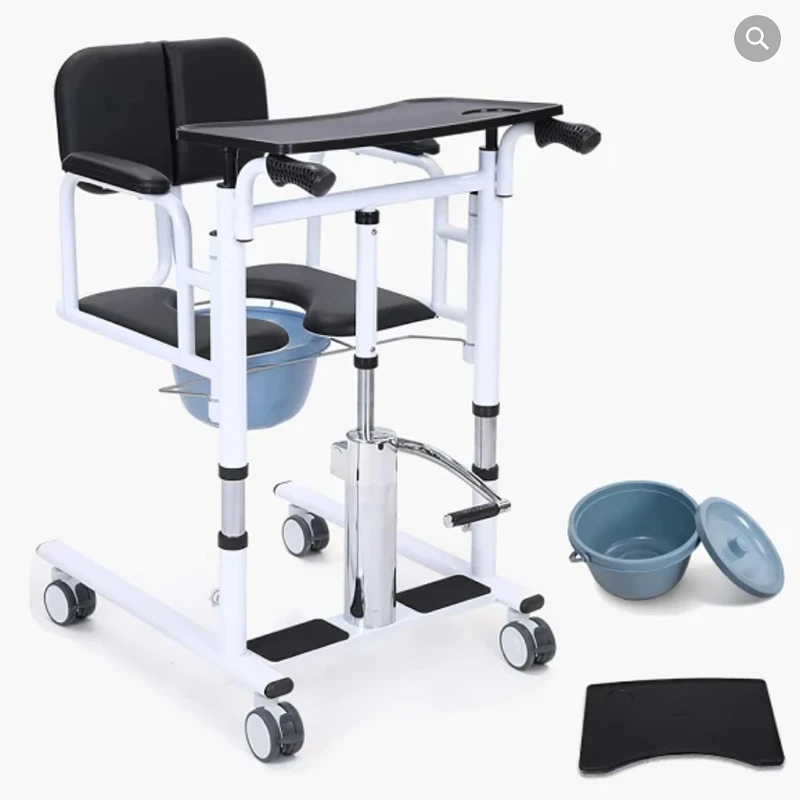
A commode chair is a versatile piece of equipment designed to provide comfort and convenience for individuals with mobility challenges or those recovering from surgery. The key features of a commode chair include a sturdy, rust-resistant frame made from materials such as aluminum or steel, which ensures durability and safety during use. Most commode chairs are designed with a comfortable seat, often padded, and may feature an ergonomic design to support the user during long periods of sitting. The chair includes a removable pan or bucket beneath the seat, which allows for easy waste disposal and cleaning. Some commode chairs come with adjustable heights, enabling users to customize the chair to their needs and ensuring comfort while seated. For additional safety, many models include armrests and backrests for extra support, making it easier for users to sit down and rise from the chair. Non-slip feet or casters with locking mechanisms are common features, providing stability and preventing the chair from sliding during use. Portable and lightweight designs make it easy for users to move the chair between different rooms or take it with them when traveling. Some commode chairs are also designed to be used over toilets, allowing users to utilize existing bathroom facilities while maintaining privacy and dignity. These chairs are often foldable for convenient storage and easy transport.
How Do Commode Chairs Benefit Users and Healthcare Providers?
Commode chairs provide essential benefits for both users and healthcare providers, particularly for individuals with limited mobility or those recovering from surgery. For users, commode chairs allow for increased independence and dignity by offering a safe and convenient solution for toileting when accessing the bathroom is difficult. The comfort and stability provided by the chair help prevent falls or accidents, reducing the risk of injury while using the toilet. With features like armrests and backrests, the chair offers additional support, making it easier for users to sit down and stand up safely. Commode chairs are also beneficial for individuals with limited strength or endurance, as they eliminate the need to walk to the bathroom, especially for those who may have difficulty with balance. For healthcare providers, commode chairs are an invaluable tool in ensuring patient comfort and safety during toileting. Healthcare workers can assist patients with transferring to the chair, offering a practical solution for managing patients who need help with personal care. These chairs are also easy to clean, which is essential for maintaining hygiene in medical or home settings. In hospitals or nursing homes, commode chairs help streamline patient care routines by providing a portable and accessible solution for toileting, reducing the need for frequent bathroom trips and helping patients maintain their privacy and dignity. For caregivers, the use of commode chairs minimizes the physical strain associated with assisting patients in traditional toilets.
How To Choose The Right Commode Chair For A Patient or Healthcare Facility?
Selecting the right commode chair for a patient or healthcare facility requires careful consideration of several factors to ensure the chair meets the user’s specific needs and provides safety and comfort. First, assess the patient’s mobility level and the level of assistance required. For patients with limited mobility or those who need extra support, a commode chair with armrests, backrests, and a padded seat can provide added stability and comfort. It’s also important to ensure that the chair’s height is adjustable to accommodate the patient’s needs and allow for a comfortable sitting position. The frame material is another consideration; lightweight, rust-resistant materials like aluminum or plastic are ideal for easy maintenance and durability. If the chair is to be used in a healthcare facility, consider models with casters for mobility, making it easier to move patients from one location to another, with locking mechanisms for stability when in use. If the patient will be using the chair over a toilet, ensure that the commode chair fits the toilet's dimensions properly. Additionally, consider features such as a removable bucket or pan for easy waste disposal and cleaning. The design should also focus on ease of use and portability, particularly for home settings, where the chair might need to be moved between different rooms or stored when not in use. Finally, ensure that the chair meets necessary safety standards and is easy to clean, as hygiene is essential in preventing infections and maintaining patient care.



 PDF
PDF